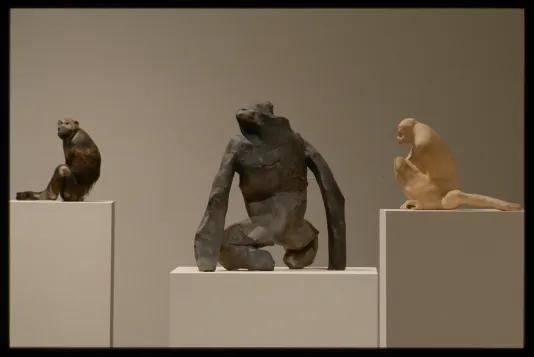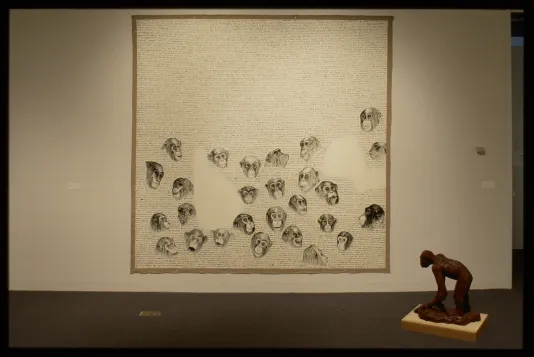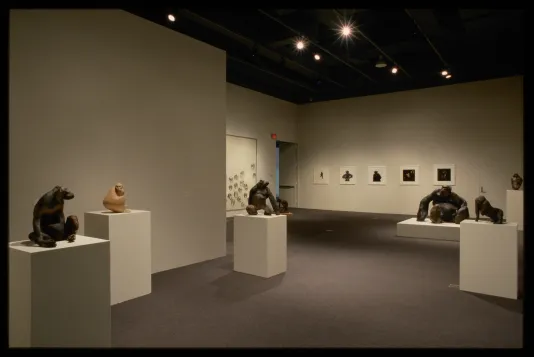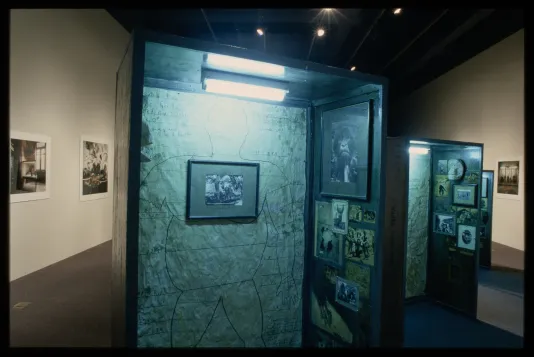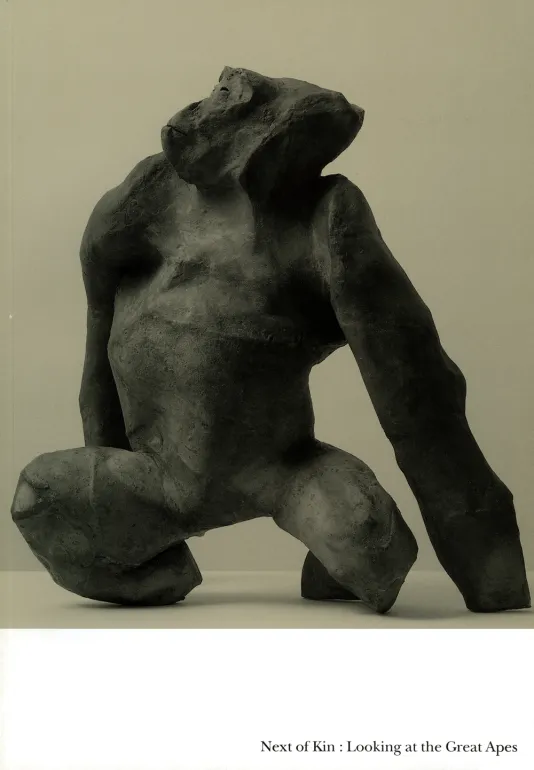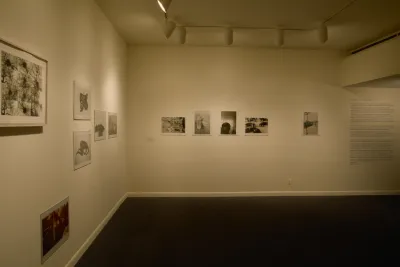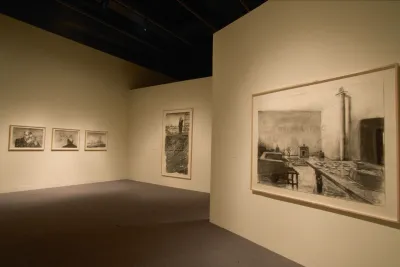Installation view, Next of Kin: Great Apes, MIT List Visual Arts Center, 1995. Archival slide.
Next of Kin: Looking at Great Apes
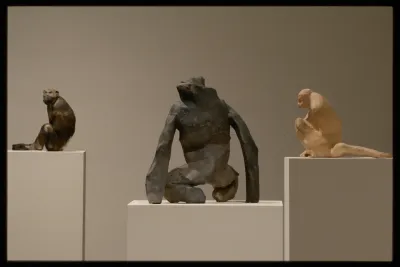
Next of Kin: Looking at Great Apes presents work by six contemporary US artists who examine the charged and often contradictory relationships between humans and the great apes.
Walton Ford, Daisy Youngblood, Sean Landers, Richard Ross, James Balog, and Jean Lowe either critique or look beyond the historical archetypes which tend to dominate contemporary consideration of our simian relatives. Through a variety of aesthetic approaches, these artists focus upon notions of what is human and what is animal; evolutionary and behavioral links between humans and the great apes; the institutional treatment of apes; and the ape’s symbolic role as a stand-in for aberrant or unseemly human behavior.
Colorado photographer James Balog combines portraiture and wildlife photography in intimate and revealing portraits of chimpanzees which focus on the sitters’ individuality and reveal striking similarities between our two species. New York painter Walton Ford’s Procrustes in Africa examines the unseen role museums play in the accumulation of their collections. Painted upon the backs of three freestanding crates are scenes of a gorilla hunt, and within the coffin-like crates Ford has arranged photographic and forensic “evidence” to further challenge our assumptions about the museum’s supposed neutrality. Sean Landers’ use of the chimp in recent paintings, sculpture, and video conflates historical characterizations of apes in art with his own constructed “loser” persona. For Next of Kin, Jean Lowe has created Gentlemen’s Club, a new room-sized installation which embeds within a façade of faux 18th-century wallpaper, ornamental carpets, and papier-mâché furniture a pictorial narrative which examines the treatment of apes within the entertainment and medical research industries. Richard Ross’ seductive color photographs of museum displays address the presentation of animals as artifacts, calling into question the outdated modes of ordering nature that remain entrenched within our institutions. Daisy Youngblood’s abstracted sculptures of apes are hand-molded and baked in fires to achieve their rough and smoky surfaces. Youngblood imbues them with a primitive spirit in which we recognize ourselves.
Catalogue with essay and artists’ entries by curator Ron Platt and additional essays by Harriet Ritvo and Tommy L. Lott.
